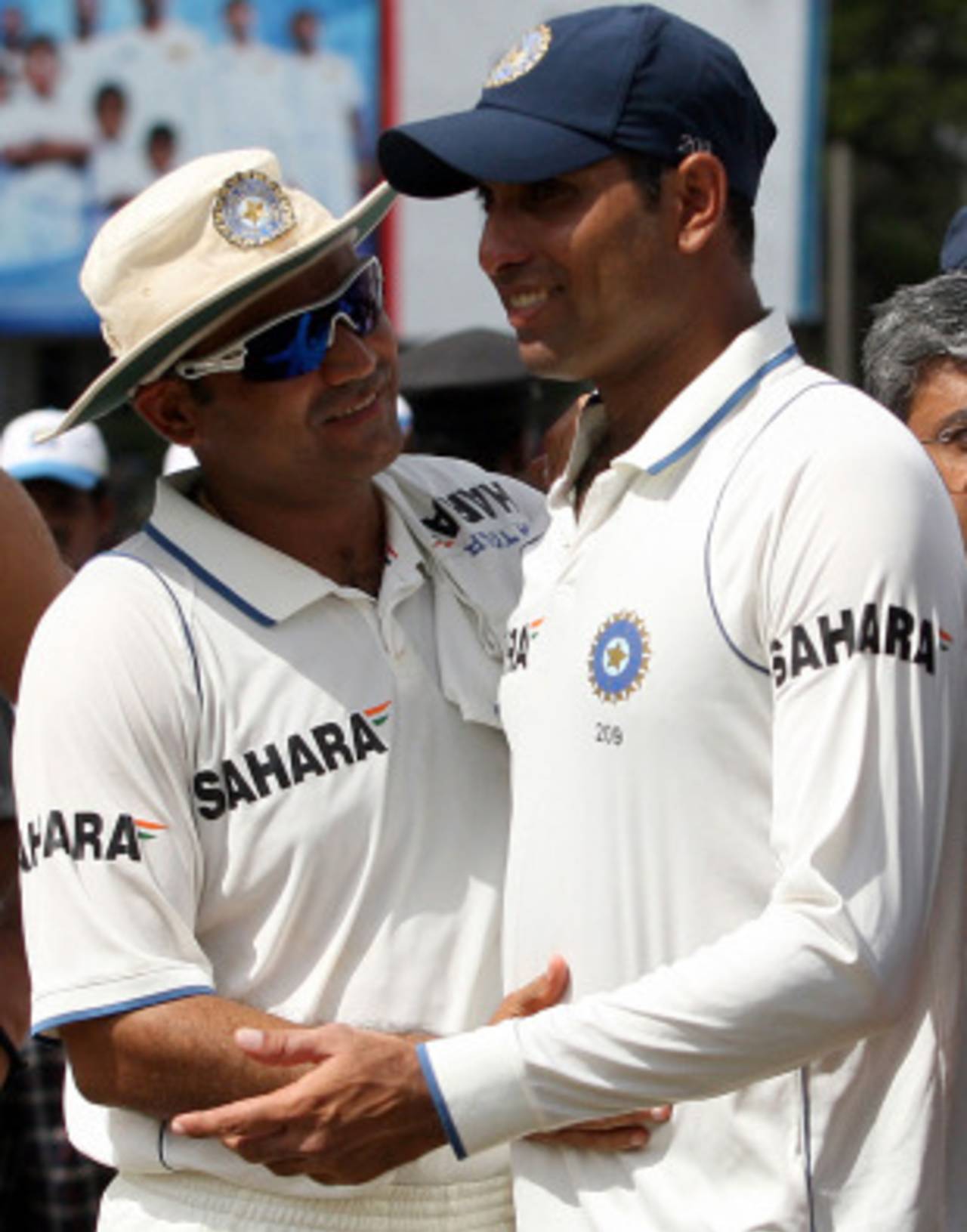The computer had India ranked No. 1 and Australia at 4. The cricket told a different story. India were making mental mistakes, dropping catches and generally fielding poorly, while the Australians combined aggressive running between the wickets with gritty batting and bowling. Then something strange happened.
Well, maybe not that unusual. The sight of a baggy green cap in the foreground and victory off in the distance has an energising affect on VVS Laxman. On those occasions he adds an extra V to his name and becomes Very, Very, Very Special.
Laxman marched out to bat like a straight-backed drill sergeant, but his ailing back didn't stop him putting a bayonet through Australia's victory charge. There was nothing wrong with his eyesight. He had visions of Kolkata and Chennai in 2001, only this time he was eyeing a different style of finish.
India won those two excruciatingly tense matches in 2001, but Laxman wasn't able to celebrate victory with a bat-waving ceremony. In
Kolkata it was the bowlers who finished what he'd started, and in
Chennai he was robbed of the moment of glory by a brilliant diving catch from the man in the Australian side who most emulated his style - Mark Waugh.
In Mohali, Laxman appeared to be playing in a mid-week industrial league match. Even the irritating back injury wasn't really a concern; he'd already dealt with a similar problem in Sri Lanka, where he had clinched victory with a glorious century. That was one thing he had going for him: he already knew what his limitations were with the back problem and had a fair idea how they could be overcome. That's the most difficult thing for a batsman with an injury. He has to work out what's possible and what isn't. Often the player is back in the pavilion before he's solved the riddle.
Laxman had one other crucial thing going for him in Mohali: his extraordinary hand-eye coordination. If he'd been lost to cricket and become a doctor, as so nearly happened, he'd have been a brilliant surgeon. His ability to middle the ball 99 times out of a hundred stood him in good stead, as he was unable to shift his feet very far. It's an amazing stroke of fate that India has two of the most gifted hand-eye players in one team, with Virender Sehwag another similarly talented player.
Laxman has always been tactically aware; he would have been India's best choice as captain following Sourav Ganguly's successful reign
Utilising his gift to the full, Laxman immediately began scoring at a good rate. This was crucial in the situation because it not only dramatically reduced India's daunting target, it also put the Australian bowlers on the defensive. Where every other Indian batsman had to contend with balls pitched on an awkward length, especially from the tireless Ben Hilfenhaus, Laxman avoided these dangerous deliveries by going on the attack. Hilfenhaus was wary of over-pitching to Laxman because when he did, the ball disappeared through cover or point to the boundary.
It's incredible to think that in his early days this remarkable strokeplayer would often ask, "Have you seen anything wrong with my batting?"
There was no lack of confidence through the whole ordeal in Mohali. Laxman was unflappable until victory beckoned. Then even he became animated and remonstrated with his partners for not completing a crucial run as the deficit dwindled to single figures. This rare display of passion served to reveal the depth of his intense competitive drive.
Laxman's contribution to India's breathtaking victory went way beyond the runs he scored. His decision early on to put his faith in Ishant Sharma's batting ability played a big part in the gangling quickie's vital role in their match-winning partnership.
Laxman has always been tactically aware; he would have been India's best choice as captain following Sourav Ganguly's successful reign. He will never captain the team but he'll forever be remembered as India's most prolific match-winning batsman.
After the victory India remained No. 1 and Australia at 4, as recorded by the computer. However, computers only tell you about history; they have no concept of heart. They count Tests but don't account for temperament. You have to see VVS Laxman bat to understand his magic.
Former Australia captain Ian Chappell is now a cricket commentator and columnist
